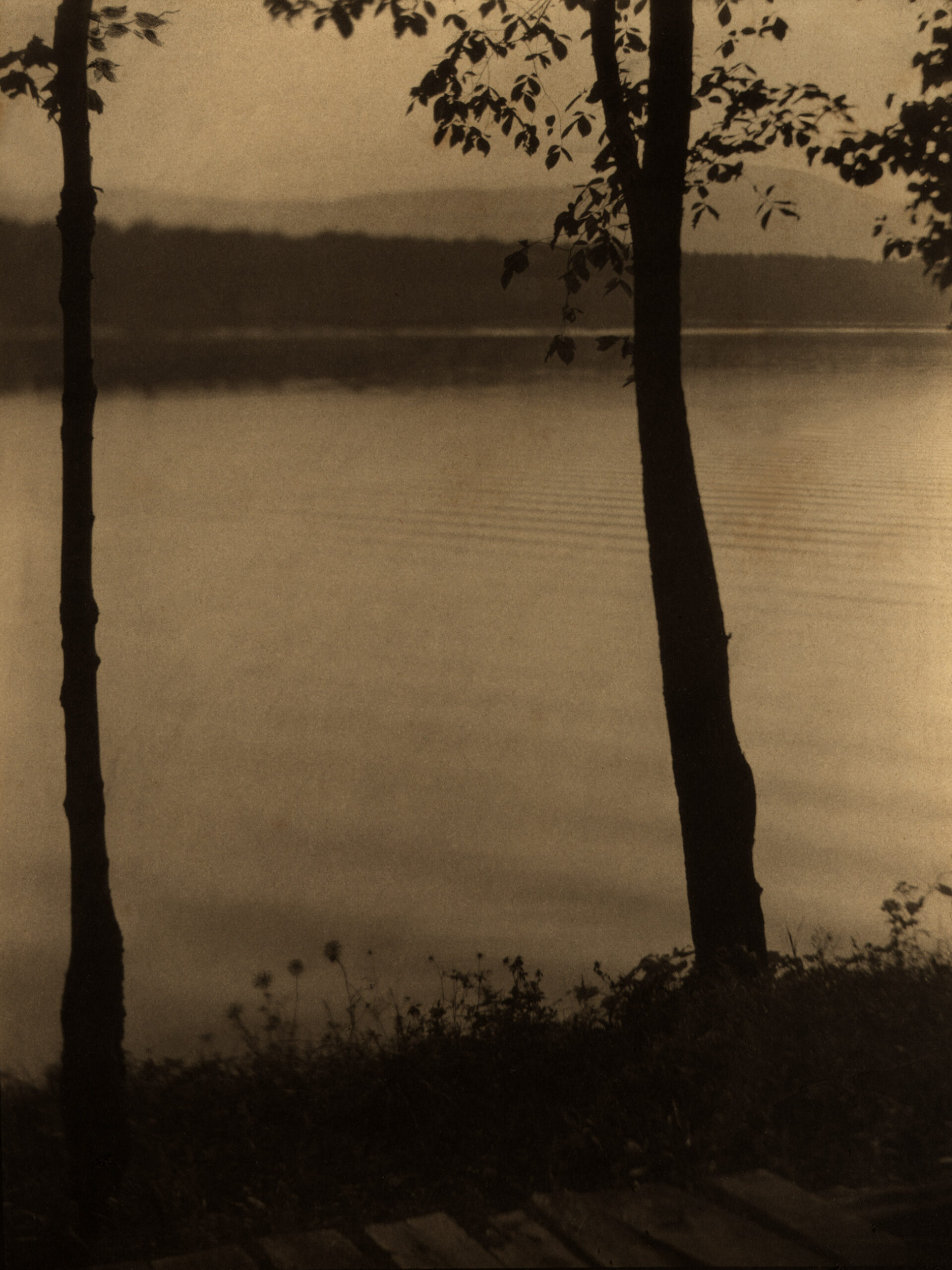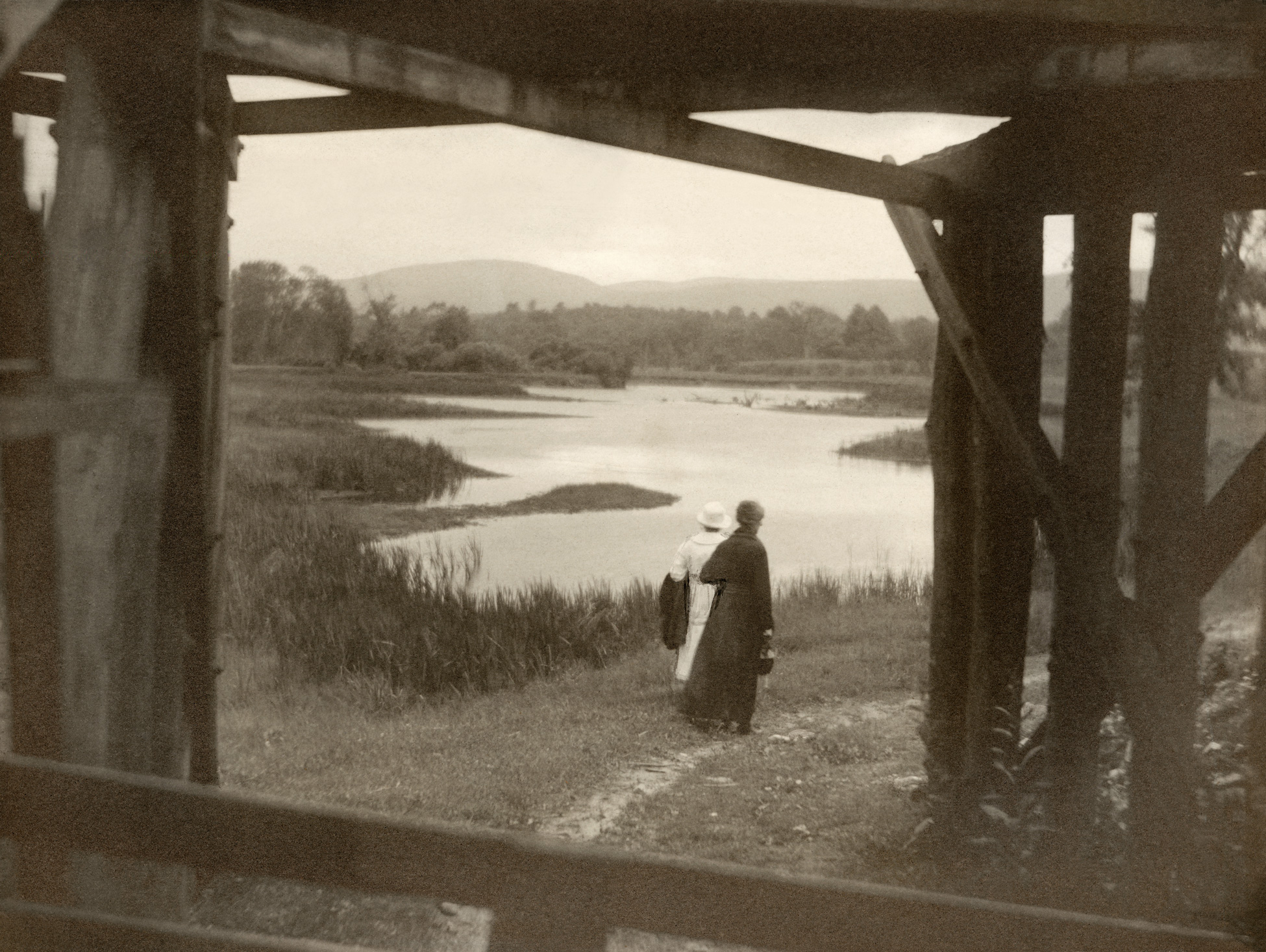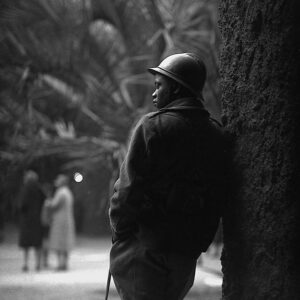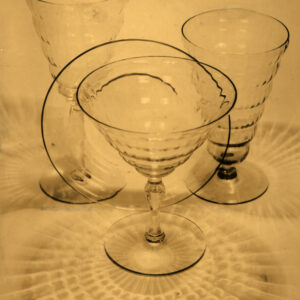Evening 1923

Margaret Watkins, Evening, 1923
Palladium print, 16.3 x 21.2 cm
The Hidden Lane Gallery, Glasgow
With its blurred focus and subtle range of tones, Evening would be considered a perfect Pictorialist image. Margaret Watkins attended the Clarence H. White summer school in 1914 in Maine and again in 1917 when it moved to Canaan, Connecticut. Many of the exercises given to the students at the school involved photographing the coast and surrounding landscape. The vertical lines of Watkins’s trees in Evening direct the eyes, while the horizontal masses of the land—the shoreline beneath the trees and the far shore and hills—ground the scene. And as the eye takes in more detail, finding the more subtle range of tones that the palladium print allows for, the viewer feels the movement of the water’s waves, the lighter distant hills, and the play of grasses below and leaves at the top of the frame. The latter, with their lacy effect, offer a lightness to the photograph balanced by the grounding darker tones.
The work also follows the composition rules of American artist Arthur Wesley Dow (1857–1922): finding vertical and horizonal lines to structure the image and creating patterns of light and dark. Besides being an artist, Dow was a specialist in Asian art, basing much of his theory on Japanese prints. He taught art and photography at Columbia University’s Teachers College and influenced both Clarence H. White (1871–1925) and Max Weber (1881–1961), who in turn taught these principles to Watkins.

Watkins would have considered this photograph one of her most successful, since it showed in multiple exhibitions internationally. There are three extant prints of this photograph, variously dated 1920, 1922, and 1923. Its Pictorialist strategies of composition and subtle tone value were recognized by many of the burgeoning photographic exhibition sites for art photography of the time. The 1922 print showed that year in San Francisco at their Second Annual International Exhibition of Pictorial Photography. From there, it travelled in 1923 to the Second International Kohakai Salon of Photography, appearing in Kobe, Tokyo, Osaka, and Kyoto. Watkins sent the 1923 print to the San Francisco and Oakland International Salon of Photography, then to the Frederick & Nelson Fifth Annual Salon of Pictorial Photography in Seattle in 1924, and, following that, to the Internationale Foto-Tentoonstelling in Bandoeng, Java. It was perhaps the 1920 print that she included in her 1923 solo show at the Art Center in New York City.
We can see how Watkins eventually moves through Pictorialism into modernism by comparing this perfect Pictorialist image—an atmospheric tone-poem—with another landscape, Bridge, Canaan, Connecticut, 1919. In it, Watkins achieves Dow’s notan, the patterning of light and dark, particularly in the receding, curving river, but she also includes modernist experimentation. The photograph frames the landscape and women walking with the geometric form of the bridge. However, this form does not offer simple horizontal and vertical lines. The engineering of this bridge is hard to read, and we are thrown off-kilter into some confusion. The women taking a pastoral summer’s walk toward the river are thus seen through a modern disturbance, a making strange of our everyday world—a strategy Watkins would use to create her most successful domestic images.

 About the Author
About the Author
 More Online Art Books
More Online Art Books
 Acknowledgements
Acknowledgements